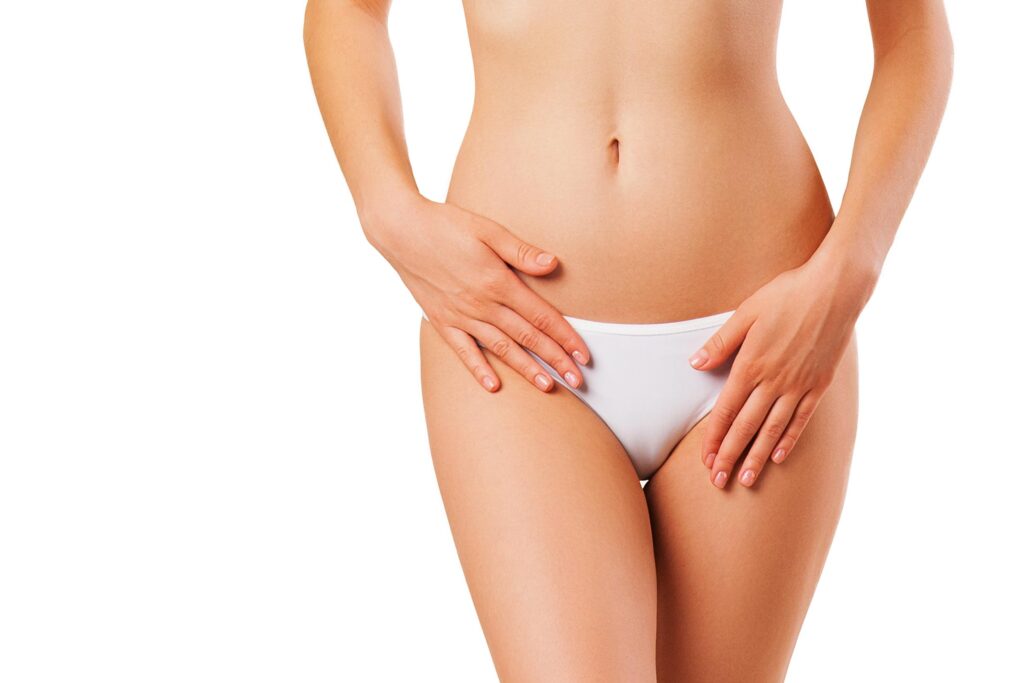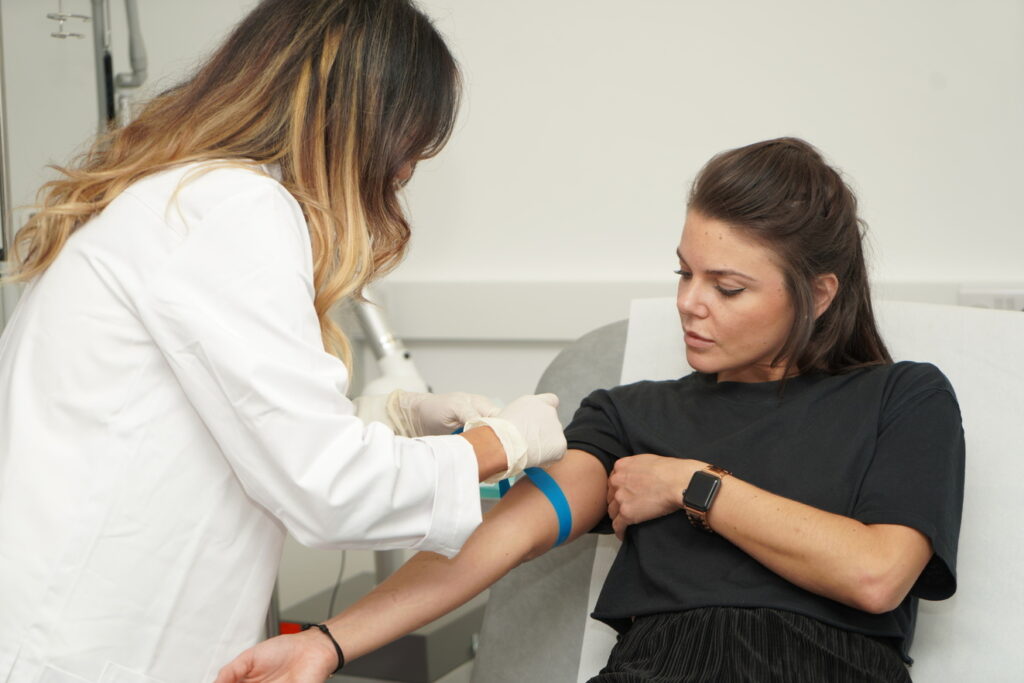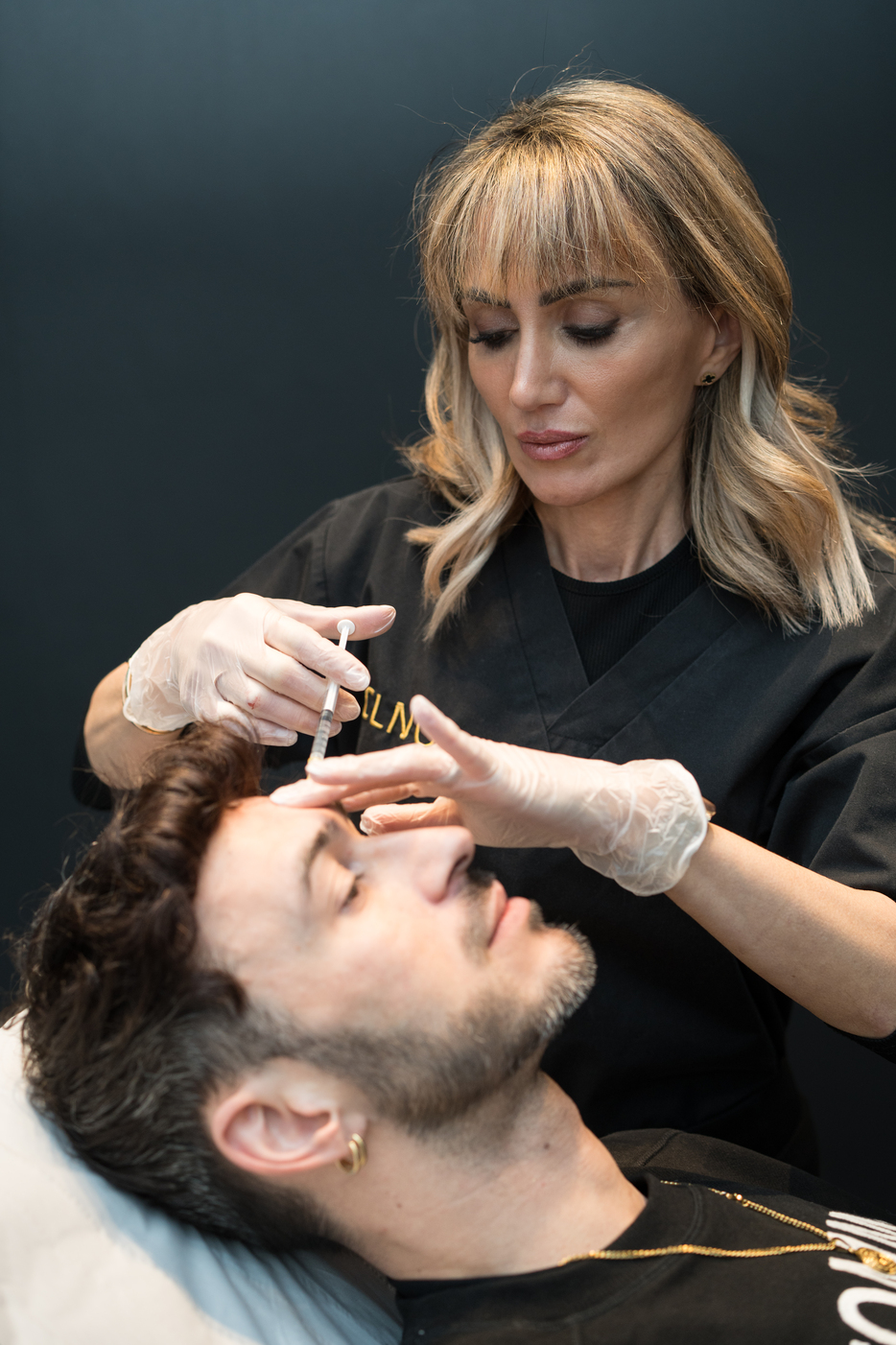Vaginal tightening refers to a set of procedures, exercises, or treatments aimed at improving the tone, strength, and elasticity of the vaginal tissues. This is often sought by women who experience changes to the vagina due to pregnancy, childbirth, ageing, or hormonal fluctuations. These changes may lead to symptoms like vaginal laxity, dryness, discomfort during intercourse, and other pelvic floor-related issues.

Changes to the Vagina After Pregnancy and Childbirth
Pregnancy and childbirth, especially vaginal deliveries, can have a profound impact on the anatomy and function of the vagina. During pregnancy, the hormonal changes prepare the body for childbirth, softening and loosening the ligaments and tissues in the pelvic area. During vaginal delivery, the vagina and surrounding muscles stretch significantly to allow the baby to pass through the birth canal. This can lead to a number of changes:
- Vaginal Laxity: After childbirth, many women experience a feeling of “looseness” or reduced vaginal tightness. This is primarily due to the overstretching of the vaginal walls and weakening of the pelvic floor muscles, which can lead to a lack of tone and support in the vaginal area.
- Vaginal Dryness: Hormonal changes, particularly a drop in oestrogen levels after childbirth or while breastfeeding, can lead to vaginal dryness. This dryness can make intercourse uncomfortable or painful.
- Painful Intercourse: The combination of vaginal laxity, dryness, and perineal trauma (e.g., tears or episiotomy) during childbirth can contribute to pain during intercourse, medically known as dyspareunia.
- Vaginal Atrophy: Although more common in postmenopausal women, some women may experience early signs of vaginal atrophy, where the vaginal walls thin and lose elasticity due to decreased oestrogen levels after childbirth.
- Stress Incontinence: Childbirth can weaken the pelvic floor muscles, leading to stress urinary incontinence. This is when activities like coughing, laughing, sneezing, or exercising cause involuntary leakage of urine.
Vaginal Changes with Menopause
Menopause brings its own set of changes to the vagina due to the significant decrease in oestrogen production. These changes include:
- Vaginal Atrophy (Atrophic Vaginitis): The decrease in oestrogen leads to thinning, drying, and inflammation of the vaginal walls. This condition is called vaginal atrophy and can make sexual intercourse uncomfortable or even painful.
- Vaginal Dryness: Reduced oestrogen levels also decrease natural lubrication, which results in vaginal dryness. This is one of the most common complaints from postmenopausal women and can cause discomfort during sex or daily activities.
- Vaginal Laxity: Similar to post-childbirth, ageing and hormonal changes can lead to a loss of vaginal tone and elasticity, contributing to a sensation of vaginal looseness.
- Stress Incontinence: Menopause can exacerbate stress incontinence due to weakening of the pelvic floor muscles, making urinary leakage more common.
Options for Vaginal Tightening
There are several non-surgical and surgical options available for women seeking vaginal tightening. The choice of treatment depends on the individual’s symptoms, the degree of vaginal laxity, and personal preferences.
Pelvic Floor Exercises (Kegel Exercises)
Pelvic floor exercises, commonly known as Kegel exercises, are one of the most effective non-invasive methods for improving vaginal tone and reducing symptoms of stress incontinence. These exercises involve contracting and relaxing the muscles that support the bladder, uterus, and rectum. Regularly performing Kegel exercises can strengthen the pelvic floor muscles, thereby improving vaginal tightness, enhancing sexual pleasure, and reducing urinary incontinence.
To perform Kegels:
- Identify the pelvic floor muscles by trying to stop urination mid-flow.
- Once identified, tighten these muscles for 5-10 seconds, then relax.
- Repeat this process in sets of 10-15, multiple times a day.
Over time, consistent Kegel exercises can significantly improve muscle tone and support in the pelvic area.
Creams and Pessaries for Vaginal Dryness
For vaginal dryness, especially during menopause, oestrogen-based creams or vaginal pessaries (suppositories) can be helpful. These treatments work by replenishing the hormone directly in the vaginal tissue, which helps improve lubrication, thickness, and elasticity of the vaginal walls.
- Oestrogen Creams: Applied directly to the vagina, these creams help restore moisture, reduce irritation, and reverse the effects of vaginal atrophy. Bioidentical hormone replacement can help with some of these symptoms.
- Vaginal Pessaries (Oestrogen Tablets): These are inserted into the vagina and slowly release oestrogen, promoting healthier vaginal tissue.
Both treatments can significantly improve vaginal dryness, making sexual intercourse more comfortable and reducing the risk of vaginal atrophy.
Does Vaginal Rejuvenation Work?
Vaginal rejuvenation is a broad term that encompasses various surgical and non-surgical treatments aimed at improving the appearance, functionality, and sensation of the vaginal area. These procedures are often sought by women who experience changes in vaginal tone, elasticity, or lubrication due to childbirth, ageing, or menopause.
The efficacy of vaginal rejuvenation depends on several factors, including the type of treatment, the specific symptoms being addressed, and the individual’s expectations. In general, many women report positive outcomes following these treatments, but results can vary.
Non-Surgical Vaginal Rejuvenation
Non-surgical vaginal tightening treatments have become increasingly popular because they are less invasive, have shorter recovery times, and generally involve fewer risks than surgery. These include treatments using radiofrequency, laser technology, electromagnetic stimulation, and PRP injections.
1. Radiofrequency Devices (e.g., Forma V, UltraFemme 360)
Radiofrequency-based devices, such as Forma V or Votiva, use controlled heat to stimulate collagen production in the vaginal tissue, which can improve elasticity, tighten the vaginal walls, and enhance natural lubrication. These treatments can also promote blood flow to the area, potentially increasing sensitivity during intercourse.
Effectiveness: Studies suggest that radiofrequency treatments are effective for improving symptoms of vaginal laxity, mild to moderate stress urinary incontinence, and vaginal dryness. For example, a study in Lasers in Surgery and Medicine showed that women reported improvements in vaginal tightness, sexual function, and urinary symptoms after radiofrequency treatments. The improvement in tissue elasticity and vaginal tone can last for several months, but maintenance treatments are often recommended to sustain results. This is probably one of the best vaginal tightening treatment.
Pros:
- Non-invasive with minimal discomfort.
- No downtime required.
- Effective for vaginal laxity and mild incontinence.
Cons:
- Results are not permanent and may require periodic maintenance.
- Effectiveness varies between individuals, and more severe cases may need surgical intervention.
2. Laser Vaginal Rejuvenation (e.g., MonaLisa Touch)
Laser treatments involve the use of CO2 or erbium lasers to heat and ablate the vaginal tissue, which promotes collagen production and encourages the growth of healthy tissue. This can improve vaginal tightness, dryness, and symptoms of vaginal atrophy, particularly in postmenopausal women.
Effectiveness: Multiple studies, including those published in Menopause and Climacteric, have found that laser vaginal rejuvenation can be effective in improving vaginal dryness, atrophy, and mild incontinence, especially in postmenopausal women or those who have experienced significant hormonal changes. Some women report improved sexual satisfaction due to better vaginal lubrication and elasticity.
Pros:
- Can significantly improve vaginal dryness and atrophy.
- No downtime and minimal side effects.
Cons:
- Results vary, especially for more severe cases.
- Maintenance treatments are usually required after an initial course.
3. Electromagnetic Stimulation (e.g., Emsella Chair)
The Emsella chair uses high-intensity electromagnetic stimulation to cause pelvic floor muscle contractions, similar to performing thousands of Kegel exercises in one session. This is particularly beneficial for women with pelvic floor dysfunction or stress urinary incontinence, which often accompanies vaginal laxity.
Effectiveness: Clinical studies suggest that the Emsella chair can improve pelvic floor strength and reduce urinary incontinence. Women who undergo the treatment report improved muscle tone in the pelvic area and reduced symptoms of urinary leakage. Though the focus of this treatment is primarily on urinary incontinence, improvements in vaginal tone and sensation are also reported.
Pros:
- Non-invasive and painless.
- Can improve pelvic floor strength and urinary control.
Cons:
- Multiple sessions may be needed, and periodic maintenance sessions are often required.
- Results may not be as significant for vaginal laxity as they are for incontinence.
4. Platelet-Rich Plasma (PRP) Injections (e.g., “O-Shot”)
PRP injections involve using a patient’s own blood plasma, rich in growth factors, to rejuvenate the vaginal tissue and improve elasticity, sensitivity, and lubrication. PRP is often used for vaginal rejuvenation to enhance sexual function and treat vaginal dryness.
Effectiveness: While anecdotal reports are generally positive, the scientific evidence supporting the use of PRP for vaginal rejuvenation is still limited. Some women report increased sensitivity and sexual satisfaction, while others find it effective in treating vaginal dryness and mild atrophy. More robust clinical trials are needed to confirm its efficacy.
Pros:
- Minimally invasive and uses the body’s natural healing mechanisms.
- Some women report improved sexual function and vaginal lubrication.
Cons:
- Limited scientific data on long-term effectiveness.
- Results may not be as dramatic or immediate as other options.
Surgical Vaginal Rejuvenation
For women with significant vaginal laxity, more severe symptoms, or aesthetic concerns, surgical options may be more effective than non-surgical treatments. Common surgical vaginal rejuvenation procedures include vaginoplasty and labiaplasty.
1. Vaginoplasty
Vaginoplasty is a surgical procedure that tightens the vaginal canal by removing excess tissue and tightening the surrounding muscles. This is typically sought by women who have experienced significant vaginal laxity following childbirth or ageing. This is commonly known as vagina tightening surgery.
Effectiveness: Vaginoplasty is generally very effective in tightening the vaginal canal and restoring muscle tone. Most women report improved sexual satisfaction due to increased friction during intercourse. It also tends to have longer-lasting results compared to non-surgical options, as it physically alters the anatomy of the vagina.
Pros:
- Long-lasting results with significant improvements in vaginal tightness.
- Can address more severe cases of vaginal laxity that non-surgical treatments may not.
Cons:
- Requires anaesthesia and recovery time.
- As with any surgery, there are risks, such as infection, scarring, or dissatisfaction with the results.
2. Labiaplasty
Labiaplasty or labia reduction is a surgical procedure that involves reshaping or reducing the size of the labia minora. It is often sought for both aesthetic and functional reasons, such as discomfort from enlarged labia during physical activity or intercourse.
Effectiveness: Labiaplasty is highly effective in reducing the size of the labia and addressing discomfort related to excess tissue. Most women are satisfied with both the aesthetic and functional outcomes of the surgery.
Pros:
- Can significantly improve comfort and self-confidence.
- Permanent results.
Cons:
- Surgical risks include scarring, infection, or changes in sensation.
- Recovery time is longer than non-surgical treatments.
Does Vaginal Rejuvenation Work?
Vaginal rejuvenation can work, but the effectiveness depends on the type of treatment, the symptoms being addressed, and individual factors. Non-surgical treatments like radiofrequency (e.g., Forma V), laser therapy (e.g., MonaLisa Touch), and electromagnetic stimulation (e.g., Emsella chair) have shown promise in treating vaginal laxity, dryness, mild incontinence, and sexual dissatisfaction, particularly in women with mild to moderate symptoms.
However, for women with more severe vaginal laxity or aesthetic concerns, surgical options like vaginoplasty or labiaplasty may provide more definitive and longer-lasting results.
It is important for women considering vaginal rejuvenation to have realistic expectations and to book an appointment with our team at CLNQ. An individualised treatment plan based on specific symptoms, anatomy, and desired outcomes will yield the best results. Moreover, ongoing maintenance treatments may be necessary for non-surgical interventions to maintain the benefits over time.

















